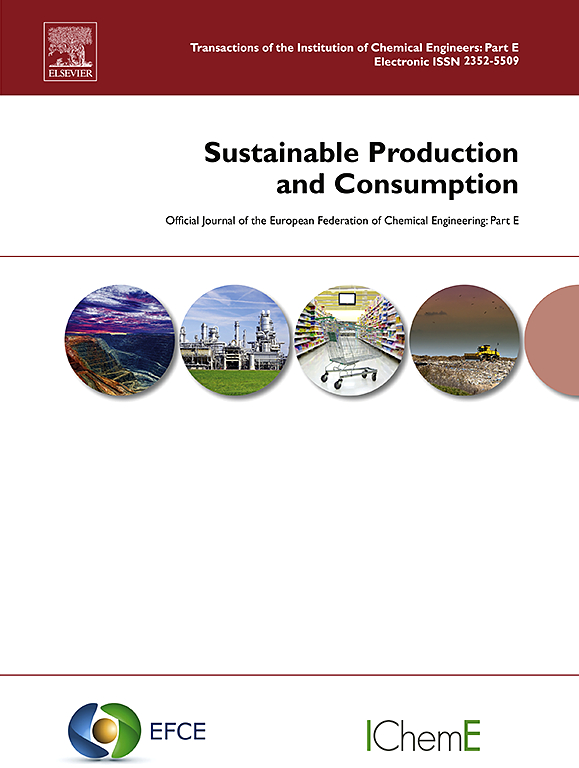Techno-economic and environmental assessment of closed-loop photovoltaic recycling in China
IF 9.6
1区 环境科学与生态学
Q1 ENVIRONMENTAL STUDIES
引用次数: 0
Abstract
Faced with the large-scale disposal of waste photovoltaic (PV) modules, identifying sustainable recycling pathways in terms of both environmental and economic performance is crucial. Utilizing life cycle assessment and techno-economic analysis, we compared three recovery scenarios—full recovery (R1), aluminum frame and glass recovery (R2), and aluminum frame recovery (R3)—with landfilling, based on closed-loop recycling practices in China. The results show that glass recovery is a key contributor to environmental benefits, while silver recovery is the most profitable, followed by glass, aluminum, silicon, and copper recovery. From an economic perspective, R1 performs the best, yielding the highest Return on Investment (ROI) at 52.17 %, achieved by recovering all components. R2 is ideal for small startups, with a 39.53 % ROI and an initial investment 47.1 % lower than that of R1. In terms of environmental impact, R1 and R2 exhibit normalized benefits of 2.98 and 2.73, respectively, within the closed-loop recycling system. R1 stands out by reducing toxic impacts by 35 %, though it faces water eutrophication. In contrast, R3 underperforms, with landfilling of residues leading to poor environmental and economic outcomes, including a − 31.00 % ROI and an additional normalized impact of 0.55. Considering the variety of recycling scales in the industry, this study provides policy recommendations for enhancing the sustainability of the PV sector. Recyclers may adopt R2 in the early stages of PV recycling to recover aluminum frames and glass, while different PV recycling enterprises are expected to collaborate in an upstream-downstream model in the future.
中国光伏闭环回收技术经济与环境评价
面对废弃光伏组件的大规模处置,从环境效益和经济效益两方面确定可持续的回收途径至关重要。利用生命周期评估和技术经济分析,我们比较了三种回收方案——全回收(R1)、铝框架和玻璃回收(R2)和铝框架回收(R3)——与垃圾填埋,基于中国的闭环回收实践。结果表明,玻璃回收是环境效益的关键贡献者,而银回收是最有利可图的,其次是玻璃,铝,硅和铜的回收。从经济角度来看,R1表现最好,通过回收所有组件实现了最高的投资回报率(ROI),达到52.17%。R2是小型初创企业的理想选择,其投资回报率为39.53%,初始投资比R1低47.1%。在环境影响方面,闭环回收系统内R1和R2的归一化效益分别为2.98和2.73。尽管面临水体富营养化的问题,但R1以减少35%的毒性影响而脱颖而出。相比之下,R3表现不佳,垃圾填埋导致环境和经济结果不佳,包括- 31.00%的投资回报率和0.55的额外标准化影响。考虑到行业中各种回收规模,本研究为提高光伏行业的可持续性提供了政策建议。回收商可能会在光伏回收的早期阶段采用R2来回收铝框架和玻璃,而不同的光伏回收企业有望在未来以上下游模式合作。
本文章由计算机程序翻译,如有差异,请以英文原文为准。
求助全文
约1分钟内获得全文
求助全文
来源期刊

Sustainable Production and Consumption
Environmental Science-Environmental Engineering
CiteScore
17.40
自引率
7.40%
发文量
389
审稿时长
13 days
期刊介绍:
Sustainable production and consumption refers to the production and utilization of goods and services in a way that benefits society, is economically viable, and has minimal environmental impact throughout its entire lifespan. Our journal is dedicated to publishing top-notch interdisciplinary research and practical studies in this emerging field. We take a distinctive approach by examining the interplay between technology, consumption patterns, and policy to identify sustainable solutions for both production and consumption systems.
 求助内容:
求助内容: 应助结果提醒方式:
应助结果提醒方式:


